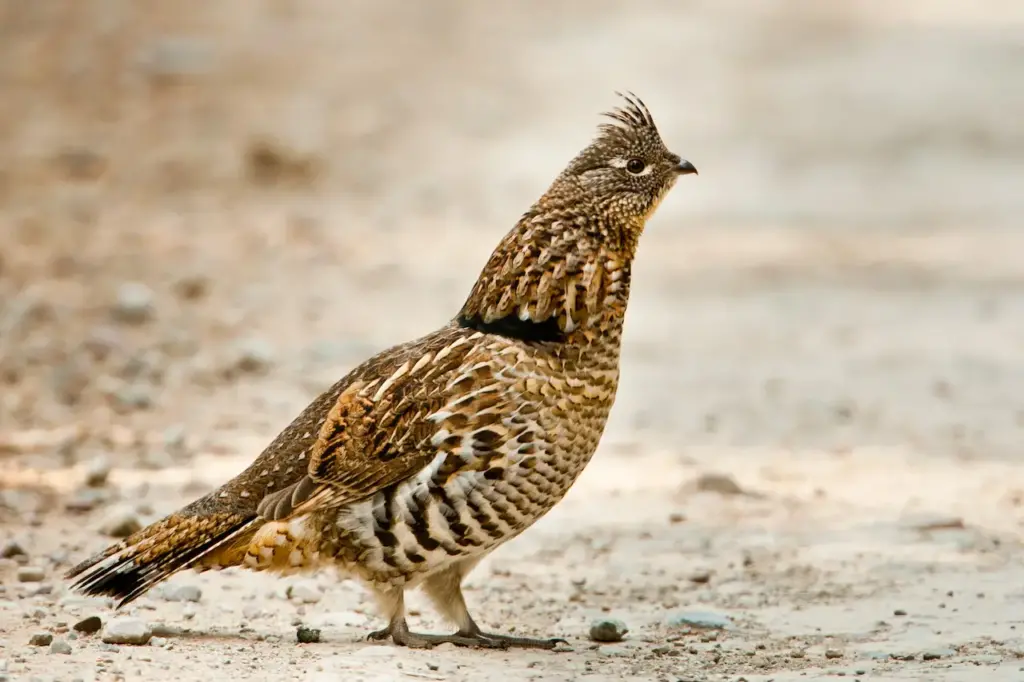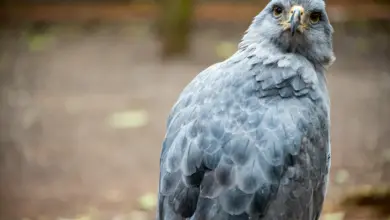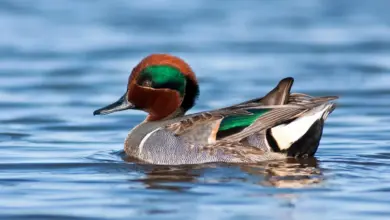Galliformes: Looking At Partridges, Guinea Fowl & Grouse
Galliformes: Looking At Partridges, Guinea Fowl & Grouse
The Galliformes is a medium-sized order, comprising game birds in three families:
- Phasianidae: Pheasants, grouse, turkeys, partridges;
- Numididae: Guinea Fowls;
- Odontophanidae: New World Quails.
Between them, they add up to 214 species in 58 genera.

Galliformes
They are generally recognised as being birds with stocky bodies, small heads and short wings. Their flight is usually rapid and low to the ground, often involving an explosive take-off.
They are generally omnivorous, taking some insect food at least whilst young. They are also generally sedentary in habit with only one species, the Quail, Coturnix coturnix, being migratory and a few species being nomadic.
Many are well know, in fact the Red Jungle Fowl, Gallus gallus, is perhaps the best known and most common bird in the world in its role as the common chicken.
All domestic forms of chickens or bantams stem from this wild species, which still occurs naturally in its native India. Other well-known members of this group include various pheasants, grouse, partridges and quail as well as the peafowl – the male of which is well known as the peacock.
Family Phasianidae
The family Phasianidae comprises birds that were until recently in several separate families; Grouse (tetraonedae), Pheasants and quail (Phasianidae) and Turkeys (Meleognididae).
These groups are now all reduced to subfamilies.
Further confusion is caused by the fact that in some books the Odontophanidae are included within the Phasianidae, but are now considered to be a family in their own right. Here I will take a brief look at each group.
Grouse
Grouse are a fairly homogeneous group of 17 medium to large species, belonging primarily to the Northern Hemisphere.
They vary in weight from 1 – 14 lbs. Males are often larger than the females and – particularly in species which lek – more colourful.
Several species of grouse exhibit communal courtship. During this time all the mature males in an area gather at a specific site – generally one used for this purpose year after year – and defend and display within a small territory.
Some of the territories are more valuable than others and the top male normally secures the most matings. Females come to the leking ground to choose and be mated by a male. In these species, the female makes the nest and cares for the eggs away from the leking ground entirely on her own.
The species in which communal courtship is most well developed are the Black grouse, Lyrurus tetrix, the Capercaillie, Tetrao urogallus, the Sage Grouse, Centrocerus cerophasianus, and the Prairie Chicken, Tympanuchus cupido.
Mating strategies in grouse range over a continuum of degrees of complexity and at the opposite extreme of the highly organised communal courtship of the Black grouse is the strict monogamy of the Red grouse, Lagopus lagopus, and the Ptarmigan, Lagopus mutus.
These birds occupy breeding territories as individual pairs – which they defend against other pairs. Even in these cases, it is usually the female who is responsible for incubating the eggs.
Most species nest on the ground in simple nests of twigs into which 5-12 cryptically coloured eggs are laid. These hatch in 3-4 weeks and are precocious, leaving the next a few days after hatching. Red grouse are able to fly after about 10 days. In some monogamous species, the male helps care for the young after they have hatched.
The Capercaillie is the largest grouse and became extinct in 1770 in the UK, but was reintroduced in 1838 and is doing quite well due to the efforts of groups like the RSPB. Courtship occurs from April to May.

Partridges and Quails
Quails are often referred to as Old World quails, a reference to their mostly palearctic distribution (Europe, North Africa and Asia) and to distinguish them from the Odontophoridae – often called New World Quails.
The Americas are the ‘new world’ and though the Odontophoridae are restricted to North and South America, ordinary quails and partridges occur in North America as well.
So it is best to leave old and new world designations behind as far as quails are concerned!
Quails and Partridges are medium-sized birds of round, dumpy appearance. They often have patterned plumage and short legs. The two groups differ in that Quails have shorter beaks, more slender tarsi, no spurs, primary wing feathers longer than secondaries and no bare areas around the eye.
Quails fly much better than partridges and Coturnix coturnix is the only truly migrant galliform bird. Migrations of these quail are recorded in the bible, or at least their arrival in certain places is.
Partridges are fairly social birds, living in groups for most of the year – but break up into breeding pairs in the spring in order to rear a brood. Each pair chooses and defends a territory.
The nest is a shallow bowl-shaped in the ground and lined with dead leaves. Into this, the female lays up to twenty eggs which she alone incubates. The male stays nearby during this time and helps protect the young after they hatch. Hatching takes about 3 weeks and the young are precocial.
Quail are less social than partridges, forming flocks only when they migrate. Like partridges they are basically monogamous – though the male has far less interest in the young. If the female population in an area is greater than the male, some males will have two females in their territory.
Common quail normally fly north from Africa to Europe to breed. Some may stay in North Africa for their first brood and then fly north for a second brood.
Quails eat a higher proportion of insects and other invertebrates, are smaller than partridges and have been introduced into North America and New Zealand. However, they are quite rare in the UK.
There are over 100 species of quails and partridges.
True Pheasants
The true Pheasants can be recognised by the long tapering tail of the males.
Which ranges from a modest collection of elongated feathers in the Red Jungle Fowl (Gallus gallus), to the extensive magnificence of the Peafowl – otherwise known as the Peacock (Pavo cristatus).
Female pheasants are all much duller than their male partners.
Pheasants, like all the game birds, have calls which are not particularly musical to the human ear and in many cases are quite harsh.
Pheasants are essentially polygamous, with the male calling and displaying to attract females and playing no part in nest building, incubation or protecting the young.
Most pheasants originated from the Indo-Asia area, though many have been introduced to remaining parts of the world to be shown off for their beauty. While the Ring Necked Pheasant (Phasianus colchicus) is a prized game bird in much of the first world.
Mated females make a nest of a small depression scraped in the soil and lined with dead vegetation into which she lays about 7-15 eggs which take about 4 weeks to hatch. The young are precocious but stay with their mother for some time after hatching – at least until they can fly.
Like the rest of the Galliformes, Pheasants are ground-feeding omnivorous birds, feeding mostly on insects, seeds and fruit.
Turkeys

Turkeys were for a long time given family status as a group, despite their being only 2 species and you will often find them under Meleagridae.
Turkeys are large birds weighing around 8 kg (17 lbs) for males and 4 kg (8.5 lbs) for females.
The head and neck are bare of feathers and the overall colour is dark grey-brown with metallic highlights. The head and neck are blue with patches of red.
The Common Turkey, Meleagris galloparo, ranges from Southern Canada to Mexico. The Ocellated Turkey, Agriocharis ocellata, is much rarer and confined to lowland rainforests in Mexico, Guatemala and Belize. It is believed that Mexican Indians were the first to domesticate the common turkey.
Domestic turkeys are now bred far larger than their wild ancestors. So large in fact, that they have trouble mating and breeders are having to develop special techniques to help the heaviest birds pass on their sperm.
Turkeys are polygamous, with males displaying to attract several females for mating. Courtship begins in February and nesting in April. The nest is on the ground and the female builds it on her own, lays 8-15 eggs and incubates them for 28 days. The young are precocial.
Turkey are social animals in the wild and roam around in flocks looking for fallen fruits and seeds. The young remain with their mother until the following spring.
Guinea Fowl (Numididae)
The six species of Guineafowl are all confined to Africa, with the Helmeted Guineafowl, Numida meleagris, having the largest range extending north to Morocco and Arabia.
It is also the best-known species outside Africa, being kept domestically in many countries including the UK.
Some species inhabit semi-arid areas though some like the rare Black Guineafowl, Agelastes niger, are forest specialists.
Guineafowl are all chicken-sized birds with round, plump bodies, longish necks and large feet. The top of the neck and the head are devoid of feathers.
Guineafowl are omnivorous, feeding on whatever is available, mostly seeds and insects. They are mostly terrestrial, living in small flocks and can travel up to 20 miles in a day’s foraging. They are not migratory.
The nest is a simple hollow in the ground with little in the way of lining. The females lay 7-20 eggs which she incubates on her own for about four weeks. As with other Galliform groups, the young are precocial and able to fend for themselves almost immediately.
New World Quails (Odontophoridae)
These are small plump birds – often strikingly marked – and with distinctive forward-pointing crests on their heads.
Currently, there are 36 recognised species.
The Odontophanidae are often referred to as New World Quails and are restricted in distribution to North and Central America.
Like Old World Quails, they are game birds – and the Californian quail, Lophortyx californica, in particular is hunted extensively with over 2 million birds being shot every year.
All species so far studied are monogamous during the breeding season but congregate in flocks or coveys during the rest of the year.
The other major game bird in this family is the Bobwhite Quail, Calinus verginianus, which is distinctive in lacking a forward-pointing crest.
Both the Bobwhite and the Californian Quail were introduced into New Zealand. The Californian Quail thrived and the Bobwhite failed to survive for unknown reasons. Bobwhites have also been introduced into Europe but not with great success.
The nest is built on the ground and unlike other Galliform groups, the male helps incubate the 8-15 eggs. Incubation takes about 17-21 days and the young are precocious.
Final Thoughts
Well, we hope this look at the order Galliformes has been interesting and you have appreciated a little of the beauty of the partridges, guinea fowl and grouse of this world!
Perhaps now you’d like to check out Shearwaters.





Hello Gordon.
Are you able to recommend any handbooks or guides on the Galliforme order?
Handbook to Birds of the World vol. 2 is about as good as it gets, but it isn’t cheap.